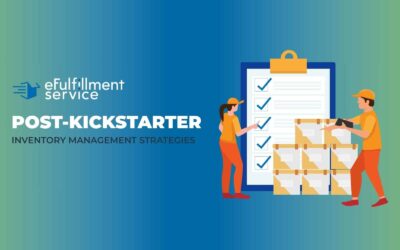Note: eFulfillment Service attended Digital Summit Detroit, and recommends the Digital Summit conference series for ecommerce companies looking to improve their marketing skills. We were especially pleased to attend the session “Consumer Retention & Win Backs For Subscription Models.” We believe the subscription niche is a growing client base for ecommerce retailers. We hope by sharing what we learned, and encouraging our clients and audience to attend the next Digital Summit, that we will all improve our ecommerce skills and flourish.
We can all agree that finding new business is tough, and so I was immediately onboard with Christopher George, co-founder and chairman of SUBTA (a subscription trade organization), when he said you’ve already paid to get your current customers, shouldn’t you keep them? He was one of several helpful, educational speakers at Digital Summit Detroit in September, 2019. His first slide hit the point home with a stat explaining that getting new customers can cost three to five times more than keeping one you already have.
 He set out to describe the means of improving the life-time value of one’s current customers, using examples from his own experience running Gentleman’s Box as well as other real-world examples. He split clients who leave a subscription service into two groups: those who leave voluntarily and those who don’t.
He set out to describe the means of improving the life-time value of one’s current customers, using examples from his own experience running Gentleman’s Box as well as other real-world examples. He split clients who leave a subscription service into two groups: those who leave voluntarily and those who don’t.
Voluntary Churn of Subscription Service Clients
The definition of voluntary churn is a client who chooses to leave a subscription, most often canceling the subscription. The plan of attack for that challenge is to:
- Identify why they are cancelling
- Adjust for it
- Offer options to change their subscription
Most often, subscription clients cancel a subscription because they can’t afford it, they don’t like the products being sent, or they have product fatigue, meaning you’re sending too much or too often. For those who indicate they can’t afford it, have a smaller offering available to keep them in the fold, and meet their budgeting issues. Product fatigue? Offer to send a smaller size, or go longer between shipments.
If you can, the best practice is to pre-empt a cancellation with attention to the problem ahead of time. Emails asking, “how’d we do?” can help. George keeps his simple, offering three smiley face responses to clients. A happy face means all is well, so George asks the client to share the good experience. A neutral face sends a heads up to the customer service team to let them know there’s an opportunity to fix something. And the sad face, generates an immediate ticket in customer service.
Involuntary Churn of Subscription Service Clients
The involuntary subscription churn happens when a credit card payment fails. To recover that client, a business should:
- Email the customer
- Call the customer
- Retry the credit card
- Repeat as needed
George indicates that the most important part of this process is tone, and recommends an approach focusing on what the client is missing. Additionally, he encourages customer service to take responsibility for the follow up actions, versus the sales team. The campaigns that his company ran offered discounts on previous boxes and individual items, when a client missed a subscription shipment. He’s seen these campaigns recover 65-70% of clients, and it’s much easier to recover these clients, than it is to find new subscribers to replace them.
The feedback from all of these engagements allows a company to note trends and learn what products and services attract and keep clients.
What do you do once you’ve lost a subscriber?
Once you’ve lost a subscriber, Gentleman’s Box sends an email asking these clients, “How would you rate your overall experience with Gentleman’s Box?” using scale of 1 to 5, where 5 is good. If customers click 4 or 5, they are sent to a Shopify review page. Those that hit 3 get a little different message, again managed by customer service. Finally, George recommends caution when responding to those that click 1 or 2, because clearly something went wrong there, and the company should strive to fix it.
All of these ex-clients get drip campaigns that offer past products at discounts and other offers that work as stepping stones towards a subscription renewal.
George does recommend different drip campaigns to past customers, with constant testing of offers, product combinations, subject lines and price points. And he points to several other companies that are contributing to the subscriber retention trend. But perhaps it’s not only subscription providers, but those interested in developing stronger relationships with customers that are investing in retention programs, similar to subscription models. Here are a few examples he shared:
Burger King is offering a $5 per month subscription to coffee. Patrons can get a cup of coffee every day, a $30 value for a small black coffee, or a month of large iced coffees would be $86. What does this unbalanced subscription give Burger King? The guess is add-on sales. Even if patrons don’t get a breakfast sandwich with every purchase, the subscription sets up a habit and exposes the patron to all things Burger King, as patrons stop in for a coffee that is perceived as free.
The Oakland A’s baseball team offered a game pass for $29 per month. It allowed holders to attend all the Oakland A’s games, five of which would be in seats. Outside of those five game, game pass holders are allowed in the park, and its restaurants and shops, where they can hang out our purchase memorabilia for 20% off during games. (have you ever paid $29 per month to visit a restaurant?) Of course one would be enjoying food and refreshments while in the park.
Cadillac is offering a subscription to any of its vehicles. Night out; use a CT6-V sedan. Need to pull your boat to the lake? Trade the sedan for an Escalade.
One benefit of subscriptions is that over time, the revenue is predictable. Companies are able to seek out investment, touting their solid subscriber metrics and using the new investment to scale up. As they retain customers, and invest in new customers, the business grows. And that’s all good.
Other Blogs, Services & Articles
Golf, FedEx & Ecommerce
2019 Trends: The Best-Selling Items on Amazon
Why Should Amazon Sellers Bundle Products?




0 Comments